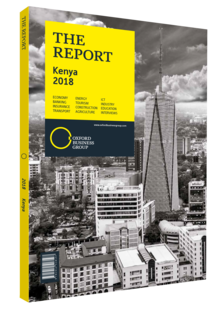Agri-tech data drives the movement of food to Kenyan markets
In recent years the accelerating uptake of new means of crop production and distribution have begun to change Kenyan smallholder farming. Between 2015 and 2017 Kenyan start-ups involved in agricultural technologies and innovations – also referred to as agri-tech – raised KSh1.37bn ($13.4m). In the wake of this explosive growth, Kenya, which was an early leader on start-up investment in Africa, has become home to 19 of 82 such firms on the continent.
Investment in these ventures has been founded in large measure on the state’s firm commitment to mobilise considerable public and private resources in support of agriculturalists. Briefly, through the first pillar of the Big Four agenda (see overview), the state has prioritised establishing national food security, raising the living standards of its millions of smallholder farmers and addressing the numerous business frictions that have long riddled the supply chain. The strategies in play for meeting these objectives, including subsidising fertiliser, extending irrigation and digitalising land registries, present openings along the entire value chain to intervene in the interest of multiplying efficiency, and entrepreneurs and financiers have stepped eagerly into partnerships that can exploit those openings.
Market Opportunity
Agri-tech’s developers have focused on several critical junctures where small improvements, such as supplying the right gadgets and acumen, could make all the difference. Among these key area of focus are: the connection of growers to markets; diagnostics like those used to test soil quality; and data distribution to relevant sector players, such as public officials.
Vis-à-vis information, mobile applications such as uLima, M-Shamba and M-Farm supply farmers with up-to-date data on weather forecasts, price indices and technical instruction via mobile phones. Complementary to those private facilities, the National Farmers Information Service, an extension programme run by the Ministry of Agriculture, Livestock and Fisheries, provides farmers with information about pests, handling and value addition pertinent to various crop and livestock enterprises.
Capital Channels
Agri-tech spending has been led by a handful of public aid agencies, private foundations and impact investors. With an eye on development beyond finance, groups like USAID, the Dutch Good Growth Fund, the global telecoms trade association GSMA and the Omidyar Network have looked to incubate new businesses and market their pilots. These initial financial backings, which have been valued between a few thousand dollars and upwards of $8m, are crucial to testing product efficacy and market viability. Those firms that project staying power and present sustainable revenue models tend to receive later and larger capital inflows from more conventional profit-seekers.
Take, for example, Twiga Foods, which uses a mobile application to connect smallholder farmers with vendors, outlets and kiosks to sell their crops. Launched in 2013, Twiga received early grants from USAID and GSMA’s ecosystem accelerator that proved pivotal in developing a fitting platform for bridging the gap between producers and consumers. Twiga has since been consistently adept in getting bananas, tomatoes, onions and other produce from rural growers to urban vendors within as little as a day, where they are then sold at reliably and mutually fair prices. In July 2017 Twiga used this success to raise $10.3m in series-A funding from Wamda Capital, a Dubai-based venture capital firm, and the Blue Haven Initiative, a US-based impact investment firm.
Adopting Innovation
Despite their reputation for reticence, the proliferation of apps such as MbeguChoice and iCow, which service purveyors of horticultural and dairy products, present evidence that smallholders are open to technology adoption where there is a clear return on their investment.
You have reached the limit of premium articles you can view for free.
Choose from the options below to purchase print or digital editions of our Reports. You can also purchase a website subscription giving you unlimited access to all of our Reports online for 12 months.
If you have already purchased this Report or have a website subscription, please login to continue.

